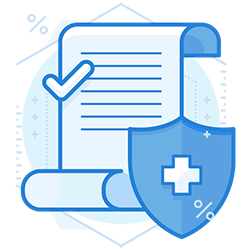What to Do With a Phishing Email
The spam emails you receive daily may seem innocuous; they’re laughably transparent with their offers of millions of dollars, after all.
But these attempts are actually much more sinister than you think. A successful phishing attack means cybercriminals gain access to your login credentials and possibly more.
Learn how to tell if you have a phishing email on your hands and how to protect against phishing email.

What does a phishing email look like?
Although the content can vary vastly between emails, there are a few things they all have in common. Things you should be on the lookout for are:
- Spelling mistakes
- Grammar errors
- Suspicious links
- Suspicious attachments
- Generic greetings
- Requests for your credentials
If an email has one or more of the above warning signs, do not open or click on anything attached in it. Do not respond to it either.
MORE : What is Phishing?
How to stop phishing emails
You should be able to report junk mail and spam to your email provider since they all have that option, this considered as one of phishing prevention best practices. Before deleting any suspicious emails, use the report function. Not only does your email provider remove and block them, they also collect example of spear phishing to prevent phishing email attempts in the future.


Don’t let phishing emails clutter your inbox
Having good Spear Phishing Protection software can stop phishing emails from entering your inbox in the first place. This is the best solution to use because you won’t have to rack your brain wondering if an email is legitimate or not also differentiate between spear phishing vs phishing.
Plus, anti-phishing software can provide other services, such as real-time link click protection and malicious attachment blocking. You’ll get all-around security from spear phishing attacks by implementing such software.
Join the thousands of organizations that use DuoCircle
Find out how affordable it is for your organization today and be pleasantly surprised.